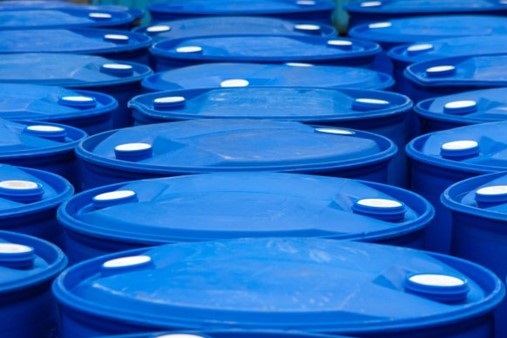There are many businesses that either produce or consume containerized products, and in doing so these businesses may find themselves with empty containers. Depending on the material that was last inside that container, that empty may be regulated by RCRA, DOT, or both. So, what is the difference? If you are a generator and shipper of empty containers, then it is up to you to know!
RCRA empty
If you have an empty container that last held a RCRA regulated hazardous waste, then that empty will continue to be a hazardous waste until certain conditions are met to relieve the RCRA regulations from that container. Per 40 CFR §261.7(b)(1), a container (or inner liner removed from a container) that held hazardous waste (besides compressed gasses, acute hazardous waste listed in §§ 261.31 or 261.33(e), or hazardous waste pharmaceuticals) is considered RCRA empty if you got as much out of the container using common practical means (pouring, pumping, etc.) and no more than 1 inch (2.5 cm) of material remains on the bottom.
Another means to determine if your container is RCRA empty is by weight. For a container that is less than or equal to 119 gallons in size, it is considered RCRA empty if no more than 3% by weight of the total capacity of the container remains in the container (or inner liner). For containers greater than 119 gallons in size, that percentage drops to no more than 0.3% by weight of the total capacity.
For containers that held hazardous waste compressed gasses, the container is empty when the pressure in the container approaches normal atmospheric pressure.
For acute hazardous waste, the container must be either triple rinsed using a solvent capable of removing the waste, cleaned by another method that has been shown in the scientific literature (or by tests conducted by the generator) to achieve equivalent removal. If the container has an inner liner that prevents contact with the container then the inner liner can be removed and the container can be deemed RCRA empty.
Containers of hazardous waste pharmaceuticals are subject to § 266.507 for determining when they are considered empty with exceptions detailed in § 266.507(c) and (d).
DOT empty
Unlike RCRA, DOT hazards are not defined by the quantity of the material, but by its properties. If the hazard still exists, then it is regulated as a full package by DOT no matter how much material is still left in the package. For example, if your package has residual flammable liquid then it is still creating a flammable atmosphere inside of the package and thus still posing a hazard during transportation. Per 49 CFR §173.29(a), an empty package containing only the residue of a DOT hazardous material shall be offered for transportation and transported in the same manner as when it previously contained a greater quantity of that hazardous material (e.g. when it was full).
To avoid DOT regulations for an empty package, the package must have all hazard markings and labels (e.g. DOT labels, hazardous waste markings) removed, obliterated, or securely covered. Moreover, the package must either be unused, cleaned out and purged of vapors, refilled with a nonhazardous material to such an extent that any remaining hazardous residue no longer poses a hazard, or only contain the residue of an ORM-D material.
Further stipulations that must be met when pursuing relief of DOT regulations for items such as division 2.2 non-flammable gasses, class 9 residues, elevated temperature residues, smokeless powder residues or shipping empty packages for reconditioning/remanufacture or reuse are covered in §173.29.
In short, the contrast between DOT and RCRA empty is as follows: RCRA is concerned mainly with how much is left and DOT is focused on if the hazard is still present.

